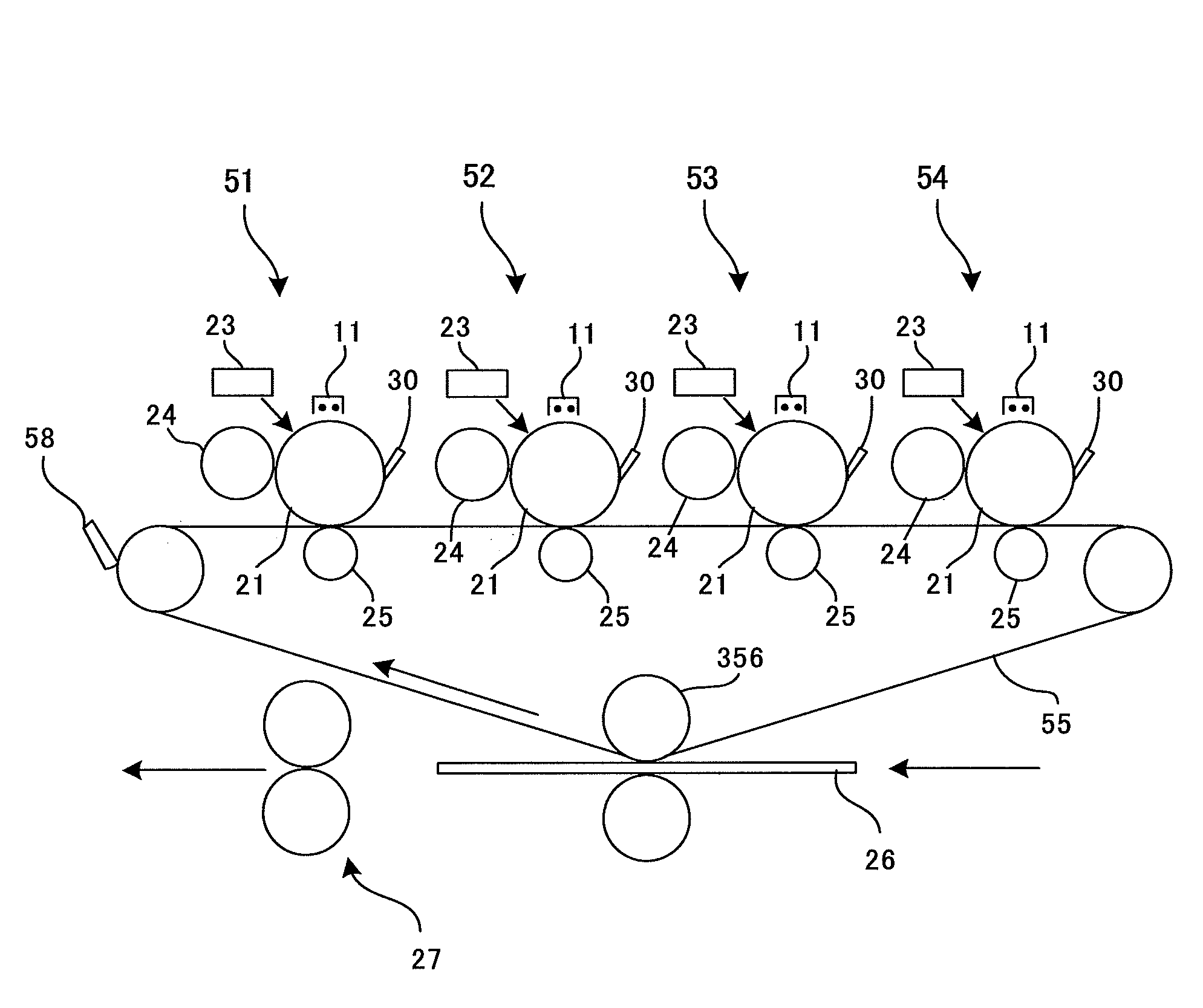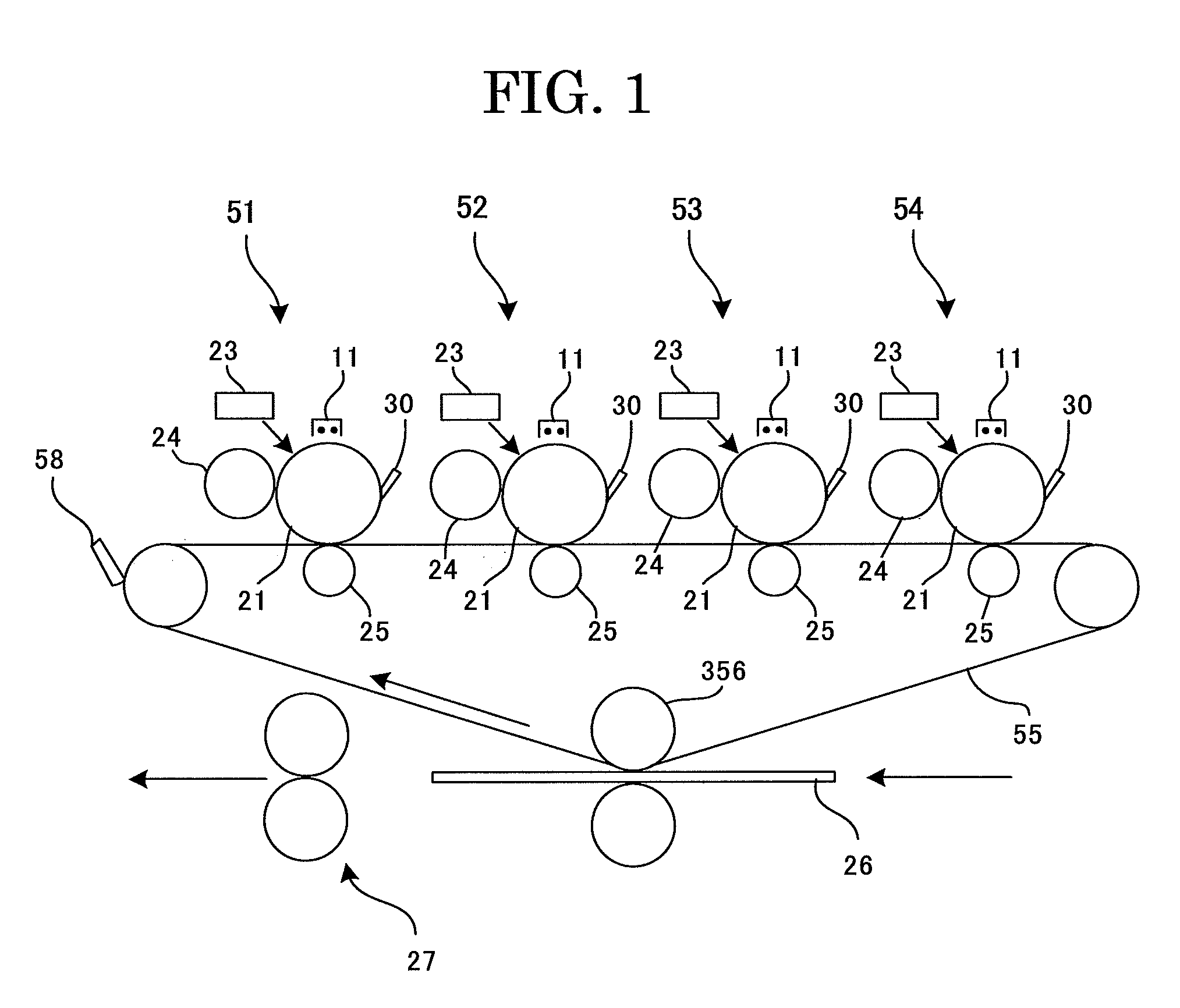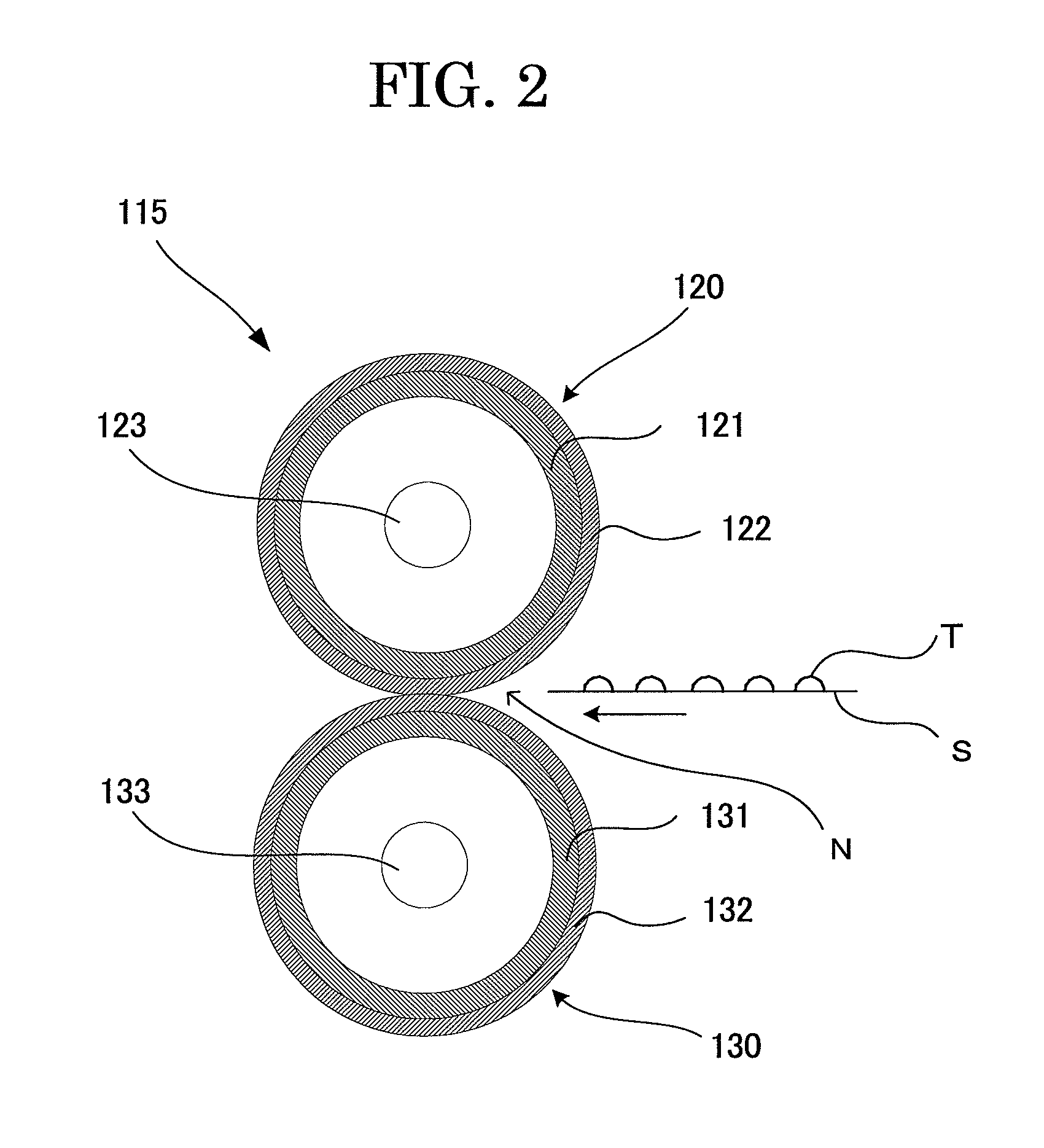Electrophotographic image-receiving sheet and image forming method using the same
a technology of image-receiving sheet and image forming method, which is applied in the field of electrotrophotographic image-receiving sheet, can solve the problems of difficult to crush or fuse toner particles, difficult to widely apply heat, and difficult to achieve wide application. , to achieve the effect of excellent toner fixing property and high quality
- Summary
- Abstract
- Description
- Claims
- Application Information
AI Technical Summary
Benefits of technology
Problems solved by technology
Method used
Image
Examples
example 1
Preparation of Raw Paper
[0128]Wood pulp LBKP (broad-leaf bleached kraft pulp) was beaten by a double disk refiner so as to have a Canadian Standard Freeness (C.S.F.) of 300 mL. To the thus-beaten pulp material, 1.0 part by mass of cationic starch, 0.5 parts by mass of alkyl ketene dimer, 0.5 parts by mass of an epoxidized fatty acid amide, 0.3 parts by mass of polyamine polyamide epichlorohydrin, 0.03 parts by mass of a higher fatty acid ester and 0.02 parts by mass of colloidal silica were added on the basis of 100 parts by mass of the pulp material. The mixture was subjected to a papermaking treatment by a Fourdrinier paper machine so as to attain a basis weight of 160 g / m2.
[0129]Thereafter, a calender treatment was carried out, to thereby prepare raw paper having a thickness of 160 μm.
[0130]The raw paper was impregnated with polyvinyl alcohol (PVA) at 1.0 g / m2 and CaCl2 at 0.8 g / m2 by a size pressing device in the middle of a drying zone.
—Formation of Resin Layer—
[0131]The front ...
example 13
[0138]Using broad-leaf bleached kraft pulp (LBKP, prepared by the sulfate process) and needle-leaf bleached sulfite pulp (NBSP, prepared by the sulfate process), a white paper base (LBKP: 50% by mass, NBSP: 50% by mass) was formed so as to attain a basis weight of 160 g / m2.
[0139]The surface of the white paper base, on which no image was formed, was provided with a back surface-resin layer (thickness: 10 μm) by melt extrusion lamination of polyethylene at 300° C.
[0140]The surface of the white paper base, on which an image was formed, was provided with a front surface-resin layer (thickness: 10 μm) by melt extrusion lamination (at 300° C.) of a kneaded product of LDPE (45% by mass), HDPE (46% by mass) and rutile-type titanium oxide (9% by mass). Through the above procedure, a support having resin layers on both surfaces thereof was formed.
[0141]A coating layer-composition containing the components given below was coated on the resultant support by a wire coater, followed by drying at ...
example 10
[0147]The procedure of Example 13 was repeated, except that the thickness of the back-surface resin layer, the thickness of the front-surface resin layer, the weight of the dried coating layer, the amount of the hollow particles contained in the coating layer and the amount of the binder contained in the coating layer were changed to 21 μm (20 g / m2), 16 μm (15 g / m2), 14.6 g / m2 (thickness of coating layer: 40 μm), 13.0 g / m2 and 1.3 g / m2, respectively, to thereby produce an electrophotographic image-receiving sheet of Comparative Example 10.
[0148]Each of the thus-produced electrophotographic image-receiving sheets of Examples 1 to 13 and Comparative Examples 1 to 10 was evaluated for its various properties in the following manner. The results are shown in Tables 2-A and 2-B.
[0149]The electrophotographic image-receiving sheets having a coating layer were evaluated for their appearances. Specifically, irregularities present on the sheet surface (white portion) were visually observed and...
PUM
 Login to View More
Login to View More Abstract
Description
Claims
Application Information
 Login to View More
Login to View More - R&D
- Intellectual Property
- Life Sciences
- Materials
- Tech Scout
- Unparalleled Data Quality
- Higher Quality Content
- 60% Fewer Hallucinations
Browse by: Latest US Patents, China's latest patents, Technical Efficacy Thesaurus, Application Domain, Technology Topic, Popular Technical Reports.
© 2025 PatSnap. All rights reserved.Legal|Privacy policy|Modern Slavery Act Transparency Statement|Sitemap|About US| Contact US: help@patsnap.com



